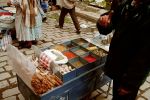
I took a bus from Arica, Chile to La Paz (for the first leg of this trip in Chile, see this link). The roads were partly out due to the heavy highland rains, so the bus had to make various detours and wait for some one-way sections, etc. As a result, it was sunset before we crossed the border at the 4660 meter (15,300 foot) pass. Coming from sea level, I was hit pretty hard at first. Tying my shoes to get out at the border required a minute or so of heavy breathing! AT the border it was snowing and there was a couple of inches of wet snow on the ground. We made it to La Paz about 12:30 in the morning.
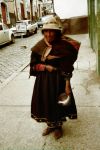
I spent the first day in La Paz wandering around, although the celebration of Carnival made things harder. There were constant water balloons (glad I had my Goretex) and spray foam, buckets of thrown water, and occasionally worse things.
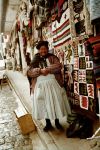
The locals often don't want their pictures taken - unless you pay - so I'd sometimes include a picture in the my negotiations. The colorful clothes, fascinating items on sale in the street markets, and scenic views were all wonderful, which made up a bit for the fact that I was unable to see much of the official aspects of Carnival. That was because the locals staked out the edges of the street and set up stands, so the parades were behind effective barriers!
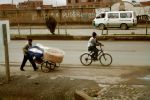
Taking pictures surreptitiously - such as this one and the next three, from bus or taxi windows - is one way to get candid shots of local people.
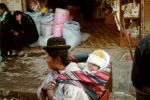
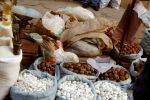
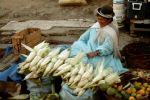
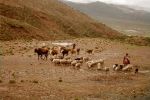
The next day, I took a tour to Tiwanaku (or Tiahuanaco), Bolivia's most important archeological site. A ceremonial center for the Tiwanakan culture that dominated much of the western part of the continent for a thousand years, the excavation and restoration are less than perfect. However, it's still worth seeing, and a tour to it also allows you an opportunity to see some of the region, like the valley where these herders live.
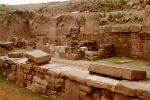
Many parts of the site are merely mounds of dirt, with occasional areas of excavation and partial restoration, such as the one shown here.
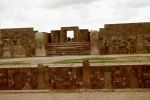
One of the more extensively excavated and restored parts of the site.
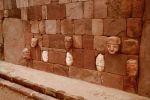
This sunken plaza is lined with dozens or even hundreds of carved heads. Some say each represents a conquered tribe - and clearly each face has a different aspect.
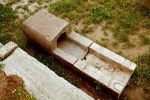
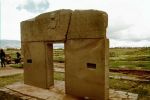
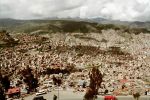
I spent another day poking around La Paz. I was sorry to discover that all the museums were closed due to Carnival - this was Tuesday, the official day of the celebration. However, the city celebrates from the Saturday before to the Sunday after. Then the next day I got an early bus to Copocabana on Lake Titicaca.
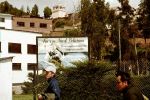
The sign says "the sea belongs to us; to get it back is our duty," a reference to the area taken from Bolivia by Chile after the War of the Pacific in the 1880s.
The ride to Copocabana was quite scenic, passing highland farms, lakeside villages, a yacht club of all things, and a navy base. You cross the straits on a ferry.
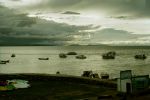
I stayed a night at Copocabana on the lake. Copocabana is the home of a famous colonial era statue of the Virgin Mary, to which miracles have been attributed. Its fame spread far and wide, especially in Brazil, and Copocabana beach in Rio was named after this village. All the other things called Copocabana - casinos and nightclubs, etc. - were named after the beach. This explains why the name of a small, dirty, poor lake port in the high Andes has become synonymous with glitzy night life!
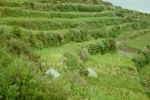
The next morning I took a boat to the Isla de Sol, the legendary birthplace of the first Incas. The island is popular with hikers who walk along the summit, between the villages, and camp or stay in hostels. I only stayed a couple hours, but if I ever get back to this area I'd like to visit longer.
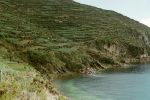
That afternoon, after getting back to Copocabana, I took a bus across the border into Peru where I ended up in Puno that night. See the continuation of the trip at this address.